Chrysler 2009 Annual Report Download - page 285
Download and view the complete annual report
Please find page 285 of the 2009 Chrysler annual report below. You can navigate through the pages in the report by either clicking on the pages listed below, or by using the keyword search tool below to find specific information within the annual report.-
 1
1 -
 2
2 -
 3
3 -
 4
4 -
 5
5 -
 6
6 -
 7
7 -
 8
8 -
 9
9 -
 10
10 -
 11
11 -
 12
12 -
 13
13 -
 14
14 -
 15
15 -
 16
16 -
 17
17 -
 18
18 -
 19
19 -
 20
20 -
 21
21 -
 22
22 -
 23
23 -
 24
24 -
 25
25 -
 26
26 -
 27
27 -
 28
28 -
 29
29 -
 30
30 -
 31
31 -
 32
32 -
 33
33 -
 34
34 -
 35
35 -
 36
36 -
 37
37 -
 38
38 -
 39
39 -
 40
40 -
 41
41 -
 42
42 -
 43
43 -
 44
44 -
 45
45 -
 46
46 -
 47
47 -
 48
48 -
 49
49 -
 50
50 -
 51
51 -
 52
52 -
 53
53 -
 54
54 -
 55
55 -
 56
56 -
 57
57 -
 58
58 -
 59
59 -
 60
60 -
 61
61 -
 62
62 -
 63
63 -
 64
64 -
 65
65 -
 66
66 -
 67
67 -
 68
68 -
 69
69 -
 70
70 -
 71
71 -
 72
72 -
 73
73 -
 74
74 -
 75
75 -
 76
76 -
 77
77 -
 78
78 -
 79
79 -
 80
80 -
 81
81 -
 82
82 -
 83
83 -
 84
84 -
 85
85 -
 86
86 -
 87
87 -
 88
88 -
 89
89 -
 90
90 -
 91
91 -
 92
92 -
 93
93 -
 94
94 -
 95
95 -
 96
96 -
 97
97 -
 98
98 -
 99
99 -
 100
100 -
 101
101 -
 102
102 -
 103
103 -
 104
104 -
 105
105 -
 106
106 -
 107
107 -
 108
108 -
 109
109 -
 110
110 -
 111
111 -
 112
112 -
 113
113 -
 114
114 -
 115
115 -
 116
116 -
 117
117 -
 118
118 -
 119
119 -
 120
120 -
 121
121 -
 122
122 -
 123
123 -
 124
124 -
 125
125 -
 126
126 -
 127
127 -
 128
128 -
 129
129 -
 130
130 -
 131
131 -
 132
132 -
 133
133 -
 134
134 -
 135
135 -
 136
136 -
 137
137 -
 138
138 -
 139
139 -
 140
140 -
 141
141 -
 142
142 -
 143
143 -
 144
144 -
 145
145 -
 146
146 -
 147
147 -
 148
148 -
 149
149 -
 150
150 -
 151
151 -
 152
152 -
 153
153 -
 154
154 -
 155
155 -
 156
156 -
 157
157 -
 158
158 -
 159
159 -
 160
160 -
 161
161 -
 162
162 -
 163
163 -
 164
164 -
 165
165 -
 166
166 -
 167
167 -
 168
168 -
 169
169 -
 170
170 -
 171
171 -
 172
172 -
 173
173 -
 174
174 -
 175
175 -
 176
176 -
 177
177 -
 178
178 -
 179
179 -
 180
180 -
 181
181 -
 182
182 -
 183
183 -
 184
184 -
 185
185 -
 186
186 -
 187
187 -
 188
188 -
 189
189 -
 190
190 -
 191
191 -
 192
192 -
 193
193 -
 194
194 -
 195
195 -
 196
196 -
 197
197 -
 198
198 -
 199
199 -
 200
200 -
 201
201 -
 202
202 -
 203
203 -
 204
204 -
 205
205 -
 206
206 -
 207
207 -
 208
208 -
 209
209 -
 210
210 -
 211
211 -
 212
212 -
 213
213 -
 214
214 -
 215
215 -
 216
216 -
 217
217 -
 218
218 -
 219
219 -
 220
220 -
 221
221 -
 222
222 -
 223
223 -
 224
224 -
 225
225 -
 226
226 -
 227
227 -
 228
228 -
 229
229 -
 230
230 -
 231
231 -
 232
232 -
 233
233 -
 234
234 -
 235
235 -
 236
236 -
 237
237 -
 238
238 -
 239
239 -
 240
240 -
 241
241 -
 242
242 -
 243
243 -
 244
244 -
 245
245 -
 246
246 -
 247
247 -
 248
248 -
 249
249 -
 250
250 -
 251
251 -
 252
252 -
 253
253 -
 254
254 -
 255
255 -
 256
256 -
 257
257 -
 258
258 -
 259
259 -
 260
260 -
 261
261 -
 262
262 -
 263
263 -
 264
264 -
 265
265 -
 266
266 -
 267
267 -
 268
268 -
 269
269 -
 270
270 -
 271
271 -
 272
272 -
 273
273 -
 274
274 -
 275
275 -
 276
276 -
 277
277 -
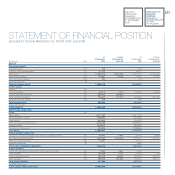 278
278 -
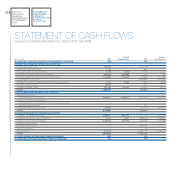 279
279 -
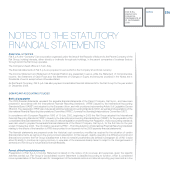 280
280 -
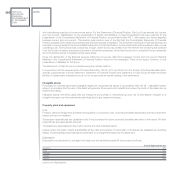 281
281 -
 282
282 -
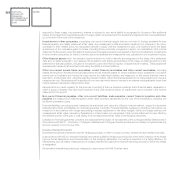 283
283 -
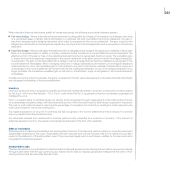 284
284 -
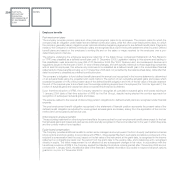 285
285 -
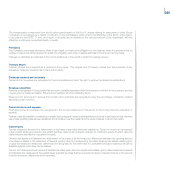 286
286 -
 287
287 -
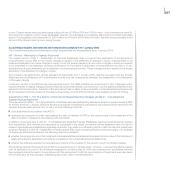 288
288 -
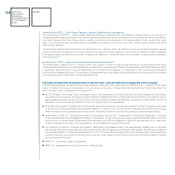 289
289 -
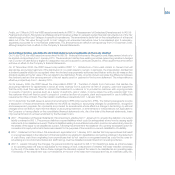 290
290 -
 291
291 -
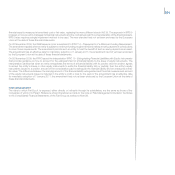 292
292 -
 293
293 -
 294
294 -
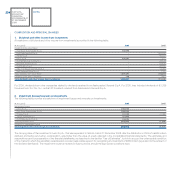 295
295 -
 296
296 -
 297
297 -
 298
298 -
 299
299 -
 300
300 -
 301
301 -
 302
302 -
 303
303 -
 304
304 -
 305
305 -
 306
306 -
 307
307 -
 308
308 -
 309
309 -
 310
310 -
 311
311 -
 312
312 -
 313
313 -
 314
314 -
 315
315 -
 316
316 -
 317
317 -
 318
318 -
 319
319 -
 320
320 -
 321
321 -
 322
322 -
 323
323 -
 324
324 -
 325
325 -
 326
326 -
 327
327 -
 328
328 -
 329
329 -
 330
330 -
 331
331 -
 332
332 -
 333
333 -
 334
334 -
 335
335 -
 336
336 -
 337
337 -
 338
338 -
 339
339 -
 340
340 -
 341
341 -
 342
342 -
 343
343 -
 344
344 -
 345
345 -
 346
346 -
 347
347 -
 348
348 -
 349
349 -
 350
350 -
 351
351 -
 352
352 -
 353
353 -
 354
354 -
 355
355 -
 356
356 -
 357
357 -
 358
358 -
 359
359 -
 360
360 -
 361
361 -
 362
362 -
 363
363 -
 364
364 -
 365
365 -
 366
366 -
 367
367 -
 368
368 -
 369
369 -
 370
370 -
 371
371 -
 372
372 -
 373
373 -
 374
374
 |
 |

FIAT S.P.A.
STATUTORY
FINANCIAL
STATEMENTS AT
31 DECEMBER
2009
NOTES
284
Employee benefits
Post-employment plans
The company provides pension plans and other post-employment plans to its employees. The pension plans for which the
company has an obligation under Italian law are defined contribution plans, while the other post-employment plans, for which
the company generally has an obligation under national collective bargaining agreements, are defined benefit plans. Payments
made by the Company for defined contribution plans are recognised as a cost in the income statement when incurred. Defined
benefit plans are based on the employee’s working life and on the salary or wage received by the employee over a pre-
determined period of service.
The scheme underlying the employee severance indemnity of the Italian Group companies (Trattamento di Fine Rapporto
or “TFR”) was classified as a defined benefit plan until 31 December 2006. Legislation relating to this scheme and leading to
this classification was amended by Law 296 of 27 December 2006 (the “2007 Finance Law”) and subsequent decrees and
regulations issued in the first part of 2007. In view of these changes, and with specific reference to those regarding companies
with at least 50 employees, this scheme only continues to be classified as a defined benefit plan in the consolidated financial
statements for those benefits accruing up to 31 December 2006 (and not yet settled by the balance sheet date), while after that
date the scheme is classified as a defined contribution plan.
The company’s obligation to fund defined benefit plans and the annual cost recognised in the income statement is determined
on an actuarial basis using the projected unit credit method. The portion of net cumulative actuarial gains and losses which
exceeds the greater of 10% of the present value of the defined benefit obligation and 10% of the fair value of the plan assets at
the end of the previous year is amortised over the average remaining service lives of employees (the “corridor approach”); the
portion of actuarial gains and losses that does not exceed this threshold is deferred.
Upon first-time adoption of IFRS, the Company elected to recognise all cumulative actuarial gains and losses existing at
1 January 2004 (date of first-time adoption of IFRS by the Fiat Group), despite having elected the corridor approach for
recognition of subsequent actuarial gains and losses.
The expense related to the reversal of discounting pension obligations for defined benefit plans are recognised under financial
expense.
The post-employment benefit obligation recognised in the statement of financial position represents the present value of the
defined benefit obligation as adjusted for unrecognised actuarial gains and losses, arising from the application of the corridor
method and unrecognised past service cost.
Other long-term employee benefits
The accounting treatment for other long-term benefits is the same as that for post-employment benefit plans except for the fact
that actuarial gains and losses and past service costs are fully recognised in the income statement in the year in which they arise
and the corridor method is not applied.
Equity-based compensation
The Company provides additional benefits to certain senior managers and employees in the form of equity participation schemes
(stock options and stock grants). In accordance with IFRS 2 - Share-based Payment, such plans constitute a component of the
recipient’s compensation and the cost, based on the fair value of the instrument at the grant date, is recognised in the income
statement on a straight-line basis over the period from the grant date to the vesting date, and a balancing entry recognised
directly in equity. The initial measurement is not affected by any subsequent changes in fair value. In accordance with the
transitional provisions of IFRS 2, the Company applied the Standard to all stock options granted after 7 November 2002 and not
yet vested at 1 January 2005, the effective date of the Standard. Detailed information is provided in respect of all stock options
granted on or prior to 7 November 2002.
